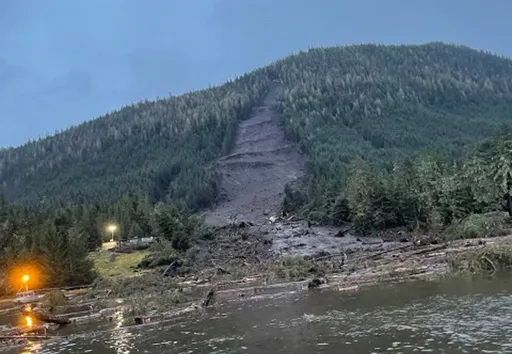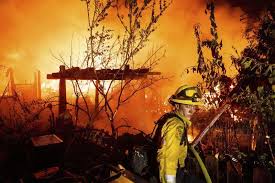
Searchers looking for three people who remain missing after a massive landslide that killed three others and injured a fourth have changed their strategy from holding an active search to a reactive search that will involve methodically clearing the highway, officials said Thursday.
“During active search periods we have searchers in the field meticulously looking for missing persons,” Austin McDaniel, a spokesperson with the Alaska Department of Public Safety, told the Associated Press. “During reactive searches, search teams are not actively in the field but will react to new information and then actively search that area supported by the new information.”
Since Monday night’s slide, officials have inspected the site by air with drones, helicopters and planes while teams using detection dogs and sonar covered the ground and water, but the three people — one adult and two juveniles — remain missing, McDaniel said.
Around 54 homes are cut off from town by the landslide, and roughly 35 to 45 people have chosen to stay in that area, interim borough manager Mason Villarma said. Boats are being used to provide supplies, including food, fuel and water, and prescription medications to those residents. Given the geography of the island — with the town at the northern point and houses along a 13-mile (20.9-kilometer) stretch of paved road — currently “the ocean is our only access to those residences,” he said.
In that way, the town “can come together physically and recognize the tragedy and the loss of life … but also the triumph of a small community that’s really come together and been able to pull off some remarkable successes, even in the face of all this adversity,” Villarma said in a phone interview with The Associated Press.
The state transportation department said on social media Wednesday that the process of clearing the highway would only begin once search and rescue efforts were complete. There was no immediate timeline for when that portion of the highway would reopen.
A woman who had been on the upper floor of a home was rescued Tuesday. She was in good condition and undergoing medical care. One of the three homes that was struck was unoccupied, McDaniel said Tuesday.
Because of the hazards of searching an unstable area, a geologist from the state transportation department was brought in to conduct a preliminary assessment, clearing some areas of the slide for ground searches. But authorities warned of a threat of additional landslides.
The slide — estimated to be 450 feet (137 meters) wide — occurred during rain and a windstorm. Wrangell received about 2 inches (5 centimeters) of rain from early Monday until late evening, with wind gusts up to 60 mph (96 kph) at higher elevations, said Aaron Jacobs, a National Weather Service hydrologist and meteorologist in Juneau.
It was part of a strong storm system that moved through southeast Alaska, bringing heavy snow in places and blizzard-like conditions to the state capital Juneau as well as rainfall with minor flooding further south.
Jacobs said the rainfall Wrangell received on Monday wasn’t unusual, but the strong winds could have helped trigger the slide.
Saturated soil can give way when gusts blow trees on a slope, said Barrett Salisbury, a geologist with the Alaska Department of Natural Resources.
Wrangell is one of the oldest non-Alaska Native settlements in the state — founded in 1811 when Russians began trading with Tlingits, according to a state database of Alaska communities. Indigenous people long lived in the area before outside contact. Tlingits, Russians, the British and Americans all accounted for historical influences on Wrangell.







